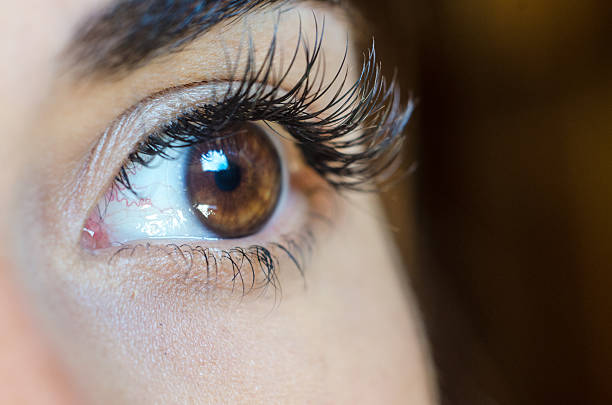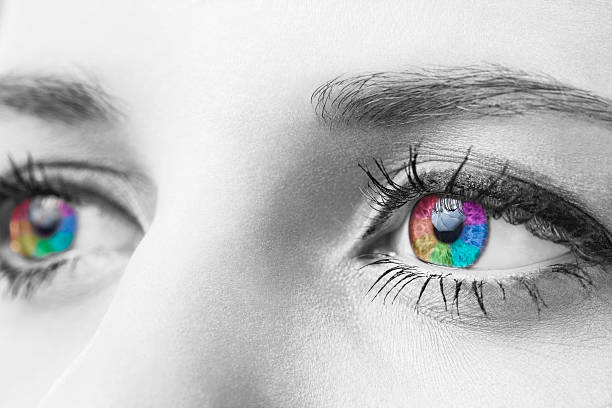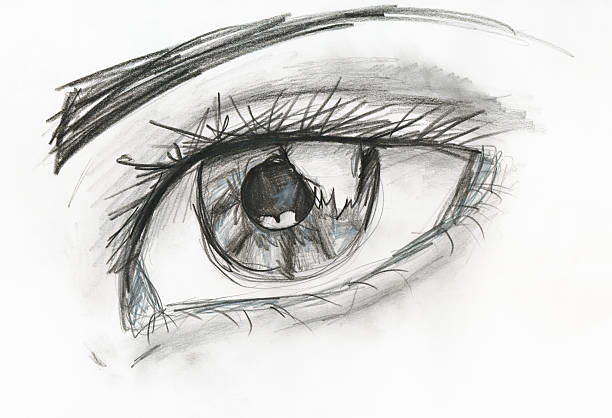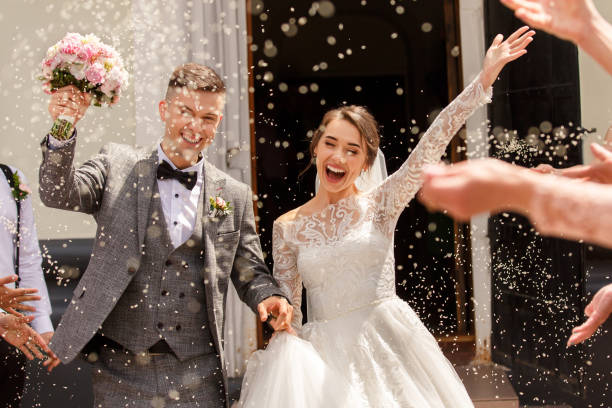How To Describe Eyes In Writing (13 Best Tips)
How To Describe Eyes In Writing
How To Describe Eyes In Writing: In the realm of storytelling, the eyes are not just windows to the soul; they are portals to a character’s deepest emotions, hidden secrets, and unique essence.
Mastering the art of describing eyes in writing is akin to wielding a magic wand, allowing writers to paint vivid and evocative portraits that resonate with readers on a profound level.
From the sparkle of excitement to the shadow of sorrow, from the intensity of desire to the weight of wisdom, the eyes are a canvas upon which emotions and character intricacies are vividly rendered.
In this exploration of “How To Describe Eyes In Writing,” we embark on a journey to unlock the secrets of crafting eye descriptions that not only engage the senses but also breathe life into characters and narratives.
Join us as we delve into the nuances of eye descriptions, from anatomy and symbolism to techniques and ethical considerations, to enhance your storytelling prowess and captivate the hearts and minds of your readers.

How To Describe Eyes In Writing
Describing eyes in writing can be a creative and detailed process. Here’s a step-by-step guide on How To Describe Eyes In Writing:
Observe the Eyes
Take a moment to closely observe the eyes you want to describe. Pay attention to their color, shape, and any distinctive features such as freckles, scars, or unusual patterns.
Consider the Setting
Think about the context in which you are describing the eyes. Is it a romantic scene, a suspenseful moment, or a casual observation? The setting can influence the tone and depth of your description.
Start with Color
Begin your description by mentioning the color of the eyes. Use vivid and descriptive words to convey the shade. For example, “Her eyes were a deep, emerald green.”
Shape and Size
Describe the shape and size of the eyes. Are they round, almond-shaped, or something else? Mention if they are large, small, or average in size.
Expressions and Emotions
Consider the emotions or expressions conveyed by the eyes. Are they sparkling with joy, filled with tears, or clouded with sadness? Describe how the eyes reflect the character’s feelings.
Pupils and Iris
Mention the size of the pupils and the details of the iris. You can describe the pupils as dilated with desire or constricted in bright light. Highlight any unique features of the iris, such as flecks or a ring of a different color.
Eyebrows and Eyelashes
Don’t forget to mention the eyebrows and eyelashes. Are the eyelashes long and dark, framing the eyes beautifully? Are the eyebrows well-groomed or wild and expressive?
Eye Movements
Describe any eye movements that add depth to the character’s emotions. Mention if they blink rapidly, gaze intensely, or dart nervously around.
Comparisons and Metaphors
Use similes and metaphors to create vivid imagery. Compare the eyes to elements in nature or objects that convey a particular feeling. For example, “His eyes were as deep and mysterious as the night sky.”
Light and Shadows
Consider how lighting affects the appearance of the eyes. Describe how they catch the light, shimmer, or cast shadows. Lighting can enhance the atmosphere of your description.
History or Backstory
If relevant, provide some backstory or history related to the eyes. Have they seen hardship, witnessed important events, or undergone a transformation?
Overall Impression
Sum up your description with an overall impression. How do these eyes make the observer feel? What impact do they have on the character’s appearance and personality?
Editing and Polishing
Review your description for clarity and coherence. Make sure your choice of words enhances the reader’s visualization of the eyes and aligns with the tone of your story.
Remember that the goal is to engage the reader’s imagination and create a vivid mental image. Tailor your description to the character and the narrative to make the eyes an integral part of your storytelling.

Understanding the Basics
Understanding the Basics of describing eyes in writing is like peering through the keyhole into the soul of your characters. Just as the eye is the window to the soul, mastering the art of depicting this intricate organ opens a portal to the very essence of your storytelling.
Delve into the fascinating anatomy of the human eye, where the iris dances with secrets, the pupil reveals the depth of emotion, and the cornea reflects the world in a thousand shimmering facets.
Learn the genetic alchemy that weaves the tapestry of eye colors, each hue an enigma waiting to be unraveled.
With these fundamentals at your fingertips, you’ll transform mundane descriptions into vivid canvases that breathe life into your characters and invite readers to journey deep into the heart of your narrative.
The anatomy of the human eye
The anatomy of the human eye is a marvel of nature’s precision and complexity. At its core, the eye is a biological masterpiece, comprised of several intricate components working in seamless harmony.
The iris, like a curtain, regulates the amount of light that enters, its unique pigmentation bestowing individuality upon each gaze.
The pupil, a minuscule portal, dilates and contracts in response to varying light conditions, mirroring the ebb and flow of emotions.
The cornea, a crystal-clear dome, refracts light, allowing the world to be painted upon the canvas of the retina.
Meanwhile, the lens flexes and focuses like a camera, ensuring that images are sharp and clear. These elements, along with many others, combine to create the breathtaking phenomenon of vision, reminding us that the human eye is not just an organ; it’s a gateway to perceiving the beauty and wonder of the world.
The science of eye colors
The science of eye colors is a captivating journey into the genetic tapestry that defines our visual uniqueness. Eye color, the result of intricate genetic interactions, is a testament to the fascinating complexities of human inheritance.
While blue, brown, green, and hazel are among the most common eye colors, the possibilities are nearly endless, with variations and shades that make each individual’s eyes as distinctive as their fingerprints.
This intricate dance of genetics involves multiple genes, such as OCA2 and HERC2, which determine the type and amount of pigments in the iris. Environmental factors can also influence the final hue.
The science of eye colors not only unveils the mystery behind our gaze but also highlights the intricate symphony of our DNA, reminding us that even in the realm of genetics, diversity reigns supreme.

The Power of Vivid Imagery
The Power of Vivid Imagery in writing is the literary equivalent of a painter’s brushstroke on the canvas of the reader’s mind.
It’s the sorcerer’s incantation that summons the story to life, transforming mundane words into an exhilarating sensory experience.
With the deft strokes of metaphor and the careful selection of adjectives, writers have the power to transport readers into the heart of their narrative.
It’s a symphony of the senses where readers can not only see the world but taste its colors, smell its emotions, and touch the intangible.
Vivid imagery is the key that unlocks the door to a realm where words cease to be mere symbols; they become a portal to a universe where imagination reigns supreme, and stories take on a life of their own.
The role of sensory language in eye descriptions
The role of sensory language in eye descriptions is akin to weaving a tapestry of perception that envelops the reader in a multisensory experience.
It’s the subtle art of not just telling the reader about the eyes but allowing them to feel the world through them.
With the right choice of words, a writer can make eyes shimmer like polished emeralds, glint with the warmth of a summer sunset, or smolder like the depths of a midnight abyss.
Sensory language invites readers to not only visualize but also feel the texture of an iris, hear the whispers hidden in a gaze, and even taste the emotions concealed behind a blink.
It’s a literary alchemy that elevates eye descriptions from mere visuals to a symphony of sensations, fostering a profound connection between the reader and the characters they encounter on the page.
Painting a picture with words: similes and metaphors
Painting a picture with words through similes and metaphors is akin to wielding a magic brush that transforms the ordinary into the extraordinary in the realm of literature.
Similes are the luminescent stars that twinkle in the night sky of prose, likening one element to another, allowing readers to see, feel, and understand the subject in a whole new light.
Metaphors, on the other hand, are the bold strokes of genius that bridge the gap between two seemingly unrelated entities, creating a fusion of ideas that dances on the canvas of the imagination.
Together, these literary devices breathe life into the written word, turning mundane descriptions into vibrant, living portraits.
They are the language of the poet, the voice of the storyteller, and the enchantment that beckons readers to immerse themselves in the vivid landscapes of the writer’s creation, where words transcend their literal meanings and become a tapestry of wonder.
Selecting the right adjectives to enhance visual impact
Selecting the right adjectives to enhance visual impact in writing is akin to choosing the perfect brush strokes for a masterpiece.
It’s about meticulously curating a palette of words that will color the reader’s imagination with vivid and evocative images.
The selection of adjectives is more than just embellishment; it’s the essence of storytelling. A well-chosen adjective can transform a simple “blue eye” into a “deep sapphire gaze,” instantly conjuring a more vivid and nuanced picture.
The art lies not only in choosing descriptive words but in understanding their power to evoke emotions and resonate with the reader’s senses.
When wielded adeptly, adjectives breathe life into characters, landscapes, and scenes, allowing readers to not only see but also experience the narrative in all its rich and immersive detail.
Beyond Physical Appearance
Beyond physical appearance lies the enigmatic realm of character depth and storytelling magic. In the world of writing, eyes are not just windows to the soul; they are mirrors reflecting the intricate layers of a character’s psyche.
They bear witness to inner storms and quiet victories, revealing secrets that words alone cannot express. Beyond the hue and shape, eyes carry the weight of history, the scars of experience, and the dreams of the future.
They are the silent narrators of a character’s journey, conveying courage, vulnerability, love, and longing with the subtlest of glances.
When a writer delves beyond physical appearance and explores the profound narrative potential within a character’s eyes, storytelling transcends the superficial, inviting readers on an emotional odyssey that lingers long after the final page is turned.
Reflecting emotions and personality through the eyes
Reflecting emotions and personality through the eyes is a poetic dance of revelation in storytelling.
The eyes are the windows through which the heart and soul’s myriad hues spill forth. In their depths, we find the silent poetry of love, the tempestuous storms of anger, the shimmering oceans of sadness, and the radiant sunrises of joy.
They can be smoldering with mystery, sparkling with mischief, or harboring the wisdom of ages. A character’s eyes not only mirror their emotions but also serve as portals to their inner world, offering readers an intimate glimpse into their fears, desires, and aspirations.
The flicker of a gaze, the quiver of a lid, or the steadiness of a stare can reveal more about a character’s personality than pages of exposition ever could.
When words alone fall short, it is in the eyes that the true essence of a character is unveiled, creating an indelible connection between the reader and the narrative.

Symbolism and cultural nuances associated with eyes
Symbolism and cultural nuances associated with eyes form a rich tapestry of meaning that transcends linguistic and geographical boundaries.
Across cultures, eyes have been endowed with profound symbolism, serving as metaphors for enlightenment, knowledge, and perception. In the East, the “third eye” is a symbol of spiritual insight and higher consciousness, often depicted as an inner eye that sees beyond the physical realm.
Conversely, in Western literature and art, the “evil eye” represents malevolent intent and the power to curse. In Native American cultures, the concept of the “eye of the heart” is revered as a source of intuition and emotional understanding.
Eyes are also deeply intertwined with cultural expressions of beauty and aesthetics, influencing practices such as makeup, adornment, and body language.
Understanding the symbolic weight and cultural nuances associated with eyes is essential for writers, as it adds depth and authenticity to character development, and offers readers a gateway into the rich tapestry of human beliefs and traditions.
Creating depth through character development
Creating depth through character development is the alchemy that transforms ink and paper into living, breathing individuals within the world of a story.
It’s the process of infusing characters with the complexities of real human beings: their hopes, fears, contradictions, and aspirations. Just as in life, a character’s journey is not solely defined by their actions but by their inner struggles, moral dilemmas, and personal growth.
It’s about crafting characters who evolve, learn, and change, driven by desires and haunted by flaws. Readers are drawn into a story not just by its plot but by the emotional resonance of its characters.
In their depth, we find empathy, connection, and a mirror reflecting our own humanity. Writers who master the art of character development breathe life into their stories, inviting readers to embark on an intimate and unforgettable voyage through the hearts and minds of their literary creations.
Examples from famous literature
Examples from famous literature illuminate the enduring power of vivid eye descriptions. In F. Scott Fitzgerald’s “The Great Gatsby,” the enigmatic eyes of Dr. T.J. Eckleburg, looming over the Valley of Ashes, become a haunting symbol of moral decay and the watchful gaze of a judgmental society.
J.K. Rowling masterfully employs eye descriptions in the “Harry Potter” series, with Voldemort’s crimson, snake-like eyes serving as a chilling emblem of his malevolence.
In “To Kill a Mockingbird” by Harper Lee, the haunting description of Boo Radley’s reclusive eyes through the eyes of Scout and Jem encapsulates the novel’s themes of innocence, prejudice, and compassion.
These literary examples showcase how authors harness the evocative potential of eye descriptions to enrich their narratives and create lasting impressions in the minds of readers, demonstrating that the eyes are not just organs but windows to the soul of a story.
Techniques for Effective Eye Descriptions
Techniques for effective eye descriptions are the secret incantations of the literary sorcerer, unlocking the deepest emotions and hidden depths of characters.
They’re the whispers that beckon readers into the intimate recesses of a character’s soul. From the choice of perspective, whether first-person intimacy or third-person observance, to the art of gradual revelation, where each detail is a breadcrumb leading to greater understanding, these techniques are the keys to creating memorable eye descriptions.
They allow writers to unveil secrets, convey emotions, and even advance the plot, all through the silent language of the eyes.
In the hands of a skilled wordsmith, these techniques transcend mere physical descriptions, forging a profound connection between the reader and the characters, leaving an indelible mark on the narrative and a lasting impression on the reader’s heart.

First-person vs. third-person perspectives
The choice between first-person and third-person perspectives in writing is akin to selecting the lens through which the reader experiences a story.
First-person perspective immerses readers deep within the psyche of a singular character, providing an intimate and immediate connection with their thoughts, emotions, and perceptions.
It’s a direct line to the character’s inner world, offering authenticity and empathy. In contrast, third-person perspective provides a panoramic view, offering insights into multiple characters’ thoughts and actions while maintaining a degree of narrative distance.
It grants writers the ability to build a complex, multifaceted world, weaving together the stories of various characters.
The choice between these perspectives is a strategic decision, each offering unique advantages and challenges, but both capable of crafting rich and compelling narratives that resonate with readers on different levels.
Incorporating eye descriptions into action scenes
Incorporating eye descriptions into action scenes is like adding a layer of visceral intensity to the narrative canvas.
When characters are caught in the throes of high-stakes moments, their eyes become windows into their determination, fear, or resolve.
Whether it’s the glint of a hero’s unwavering resolve or the widening of a villain’s malevolent gaze, eye descriptions can amplify the tension and emotion of the scene.
Readers, in these moments, are not just spectators but active participants, experiencing the adrenaline rush and emotional turmoil alongside the characters.
The subtle details of clenched lids, darting glances, or pupils dilated in shock can serve as powerful markers of a character’s internal state, allowing writers to convey depth and nuance even in the most action-packed sequences.
In the whirlwind of chaos, the eyes offer readers a grounding point, a profound insight into the characters’ humanity amidst the chaos.
Crafting Memorable Characters
Crafting memorable characters is akin to sculpting timeless works of art from the clay of imagination. It’s a delicate dance of inspiration and intention, where writers breathe life into their literary creations.
These characters are not merely ink and paper; they are the embodiment of dreams, fears, and aspirations. They carry the weight of their past and the promise of their future, and through their struggles, triumphs, and vulnerabilities, they beckon readers to walk beside them on the intricate journey of the narrative.
Like chameleons, they adapt and evolve, revealing facets of their personalities with every turn of the page, forging connections that endure long after the story ends.
In the alchemy of character crafting, writers wield the power to change lives, challenge perspectives, and ignite imaginations, leaving an indelible mark on the literary landscape and the hearts of readers.
Developing a character’s backstory through their eyes
Developing a character’s backstory through their eyes is a subtle art of storytelling, akin to tracing the lines of history etched into a person’s gaze.
Eyes, like ancient manuscripts, hold secrets and chapters of the past that can be unveiled to enrich a character’s narrative.
The subtle flicker of sorrow in their gaze might hint at a childhood loss, while the spark of determination may reveal a lifetime of challenges overcome.
The eyes can be a portal to the character’s memories, showcasing scars, joys, and sorrows that have shaped them into who they are today.
In this intricate dance of character development, writers weave the threads of past experiences into the tapestry of the present, creating a character with depth, resonance, and a compelling backstory that resonates with readers on a profound level.
Conveying inner turmoil, secrets, and hidden agendas
Conveying inner turmoil, secrets, and hidden agendas through a character’s eyes is a mesmerizing act of literary intrigue.
The eyes become a canvas of emotions and unspoken truths, reflecting the turbulence within. A character’s gaze may betray the weight of unshared burdens, the flicker of a concealed motive, or the torment of a carefully guarded secret.
In their depths, we witness the swirling storms of inner conflict, the silent battles of conscience, and the enigmatic web of desires left unspoken.
The eyes are the storyteller’s most potent instrument, revealing the complex layers of human nature that lie beneath the surface.
As writers master the art of portraying these inner landscapes through the eyes, they invite readers to become detectives, deciphering the mysteries and unraveling the hidden depths of their characters, forging an unbreakable bond between reader and narrative.
Evoking empathy and reader connection
Evoking empathy and reader connection through a character’s eyes is akin to forging an unspoken pact between writer and reader, where the boundaries of the page dissolve, and hearts converge in understanding.
The eyes, often described as the windows to the soul, become the bridge between worlds. When a character’s eyes reflect their vulnerabilities, hopes, and fears, readers can’t help but see a reflection of themselves.
It’s in those moments of shared humanity, when readers recognize their own struggles, joys, and imperfections mirrored in the characters’ gaze, that a deep and enduring connection is formed.
Through the artful depiction of eyes, writers invite readers not just to witness a story but to experience it intimately, forging bonds that transcend fiction and make the characters’ journey their own.

Case Studies
Case studies are like literary treasure maps, guiding us through the intricate labyrinth of storytelling with the wisdom gleaned from the literary masters who’ve walked the path before us.
They are the vibrant tapestries woven from the threads of imagination and inspiration, showcasing the brilliance of writers who’ve dared to push the boundaries of the written word.
These captivating narratives dissect the anatomy of storytelling, revealing the nuances of character development, plot twists, and thematic resonance with the precision of a surgeon’s scalpel.
Through case studies, we delve into the hearts and minds of unforgettable characters, witnessing their trials, tribulations, and triumphs.
These explorations of literary excellence are not just academic exercises; they are invitations to embark on intellectual adventures, fueling our own creative fires and inspiring us to craft our own masterpieces.
Analyzing notable examples from literature
Analyzing notable examples from literature is akin to entering a hallowed hall of mirrors, where each reflection reveals a different facet of the storytelling gem.
It’s a journey of literary excavation, where we unearth the treasures hidden within the words of the great authors who have shaped the canon of literature.
Through the careful dissection of these masterpieces, we uncover the secrets of character development, narrative structure, and thematic depth.
These notable examples are not just stories; they are living classrooms, offering profound insights into the human condition, cultural nuances, and the enduring power of the written word.
As we analyze these literary gems, we become not only readers but also scholars, peering behind the curtain of the author’s intentions and craftsmanship, and in doing so, we enrich our own understanding of the art of storytelling.
Deconstructing successful eye descriptions
Deconstructing successful eye descriptions is like unraveling a finely woven tapestry, revealing the intricate threads that make them shine.
It’s a detective’s quest, a literary adventure into the art of crafting evocative imagery. By dissecting these descriptions, we uncover the secrets of metaphor, simile, and the precise selection of adjectives that breathe life into the eyes on the page.
We observe how authors employ sensory language to create an immersive experience and build emotional connections between the characters and readers.
Successful eye descriptions aren’t just words on paper; they are living expressions of the characters’ inner worlds, windows into their emotions, and vehicles for conveying themes and subtext.
Deconstruction unveils the alchemy of storytelling, inviting us to peer beyond the surface and learn from the masters who’ve mastered the craft of describing eyes with brilliance and resonance.
Discussing the impact of eye descriptions on plot and character development
Discussing the impact of eye descriptions on plot and character development reveals the profound influence that seemingly subtle details can have on the entire narrative landscape.
Eyes, as conduits of emotion and intention, hold the power to shape the trajectory of a story. The way characters perceive the world, the motives they hide or reveal through their gazes, and the evolving dynamics between them, all pivot around the descriptions of their eyes.
These visual cues become signposts in the reader’s journey, foreshadowing plot twists, revealing hidden agendas, and enriching the tapestry of interpersonal relationships.
By delving into the impact of eye descriptions, we uncover how the nuances of a character’s gaze can be pivotal turning points or subtle undercurrents that drive the narrative forward, creating a symbiotic relationship between the characters’ eyes and the unfolding story.
Ethical Considerations
Ethical considerations in writing are the compass that guides us through the labyrinth of creativity, ensuring that our words bear the weight of responsibility and respect for diverse voices and perspectives.
It’s the moral anchor that reminds us that storytelling is not just an act of creation but also a reflection of our values and beliefs.
With every word we craft, we have the power to influence, inspire, or perpetuate harmful stereotypes. Ethical considerations challenge us to be conscious of cultural sensitivities, to embrace diversity, and to question our biases.
They prompt us to portray characters authentically, to avoid reducing them to caricatures, and to acknowledge the lived experiences of others.
In the realm of storytelling, ethics are not constraints but catalysts for thoughtfulness and empathy, reminding us that our words have the potential to shape minds, hearts, and even societies.
Avoiding stereotypes and clichés in eye descriptions
Avoiding stereotypes and clichés in eye descriptions is the hallmark of a discerning writer who refuses to settle for the ordinary.
Stereotypes, like overused tropes, can flatten characters into one-dimensional caricatures, robbing them of their authenticity and depth. In the world of eye descriptions, this means shunning tired clichés like “eyes as deep as the ocean” or “eyes that sparkle like stars,” and instead, embracing the unique nuances of each character’s gaze.
It’s about understanding that every pair of eyes tells a distinctive story, and it’s our duty as writers to do justice to that complexity.
By avoiding stereotypes and clichés, we honor the diversity of human experiences, allowing our characters to emerge as multifaceted beings with eyes that reflect the intricacies of their personalities, histories, and emotions.
The Revision Process
The revision process is the writer’s metamorphosis, where the raw ore of first drafts undergoes a refining fire to emerge as polished gems of storytelling.
It’s an act of alchemy, where words are transmuted into art. Like a sculptor chiseling away at a block of marble, the writer sculpts and reshapes sentences and paragraphs until they gleam with clarity and purpose.
It’s a dance of introspection and innovation, where each word is scrutinized, each scene dissected, and every character’s gaze scrutinized.
Through this meticulous process, the narrative deepens, characters grow more nuanced, and themes resonate more profoundly.
The revision process is where the magic happens, where a story is transformed from a rough sketch into a masterpiece, and where the writer’s dedication to craft shines brightest.
The importance of revising eye descriptions
The importance of revising eye descriptions in writing cannot be overstated. Just as a painter perfects each brushstroke to capture the essence of their subject, writers must refine and fine-tune their eye descriptions to encapsulate the true spirit of their characters.
Revisions allow us to peel away layers of superficiality, to dive deeper into a character’s soul, and to ensure that each adjective, metaphor, and simile resonates with precision and impact.
Eye descriptions, being windows to a character’s emotions and personality, are powerful tools for reader engagement.
Through revision, we can evoke greater empathy, reveal hidden layers of complexity, and convey subtle shifts in mood or motive.
Ultimately, the well-revised eye description has the potential to transform a character from a mere figure on the page into a living, breathing entity that lingers in the reader’s mind long after the story has ended.
Fine-tuning eye descriptions for maximum effect
Fine-tuning eye descriptions for maximum effect is the writer’s quest for poetic precision and emotional resonance. It’s about sharpening the focus, like a photographer adjusting the lens for the perfect shot, until every detail is vivid and every emotion palpable.
Each word, each phrase, becomes a brushstroke on the canvas of the reader’s mind, painting a portrait that lingers in memory. It’s in the subtle nuances, the delicate balance of adjectives, and the cadence of the prose that we achieve the greatest impact.
Fine-tuning isn’t just about aesthetics; it’s about conveying the character’s essence, their struggles and dreams, their history and destiny, all through the silent language of their eyes.
It’s in the meticulous revision of eye descriptions that we elevate them from mere words on a page to powerful conduits of connection, drawing readers into the heart of the narrative with every gaze, every flicker, and every unspoken emotion.
Frequently Asked Questions (FAQ) about How To Describe Eyes In Writing
How can I make my eye descriptions more captivating and unique?
To make your eye descriptions stand out, try to use unconventional comparisons and metaphors. Think beyond the typical “deep as the ocean” and experiment with unexpected analogies that suit your character or setting.
Should I focus on physical details or emotions when describing eyes?
Both physical details and emotions are important. Combining them can create a well-rounded description. Describe the physical characteristics first, and then delve into how those eyes reflect the character’s emotions or inner world.
Can you provide examples of how to describe unusual eye colors?
Certainly! For instance, describe violet eyes as “a shade between twilight and a pansy,” or golden eyes as “gleaming like molten honey under the sun.”
How can I describe eyes in a way that reveals a character’s backstory?
You can reveal a character’s backstory through their eyes by mentioning scars, wrinkles, or a haunted look that hints at past experiences. For example, “Her eyes held the weight of years gone by, etched with lines of wisdom and sorrow.”
What’s the best way to describe eyes in a suspenseful or mysterious scene?
In suspenseful scenes, focus on the intensity and movement of the eyes. Mention how they dart around, widen in fear, or narrow in suspicion. Describe them as “searching for answers in the shadows” or “hiding secrets behind a veil of uncertainty.”
Can I use the eyes to foreshadow events in my story?
Yes, eyes can be a subtle tool for foreshadowing. Describe them in a way that hints at what’s to come. For instance, you can mention “a glint of mischief” if a character is planning something mischievous.
How can I describe eyes in a romantic context without being cliché?
To describe eyes in a romantic context without clichés, focus on the unique qualities of the eyes and how they captivate the other person. Mention details like “their eyes met like two stars colliding in the night sky,” instead of using overused comparisons like “lost in their gaze.”
Is it essential to describe every detail of a character’s eyes?
No, it’s not necessary to describe every detail. Select the most significant and relevant details that contribute to the character’s depth or the story’s atmosphere. Less can often be more effective.
How can I convey a character’s change in emotions through their eyes during a dialogue scene?
Use eye descriptions in conjunction with dialogue tags and actions to convey emotions. For example, “Her eyes brightened with excitement as she exclaimed…” or “His eyes hardened with resolve as he responded…”
Can I use eyes to symbolize themes in my story?
Absolutely. Eyes can symbolize themes such as insight, deception, or connection. Describe them in a way that aligns with your story’s themes to add depth and symbolism.
Remember, the key to effective eye descriptions is to tailor them to your characters, plot, and the emotions you want to convey, and to keep your writing fresh and engaging.
Conclusion
In the conclusion of How To Describe Eyes In Writing, the eyes have proven time and again to be powerful conduits of emotion, character depth, and narrative resonance.
As we conclude our exploration of “How To Describe Eyes In Writing,” we find ourselves equipped with the tools and insights to transform mere descriptions into vivid canvases that captivate and engage readers.
We’ve navigated the intricate terrain of sensory language, metaphors, and character development, and delved into the realm of symbolism and cultural nuances.
We’ve also pondered the ethical dimensions of our craft, striving to represent diverse perspectives with sensitivity and respect.
Whether crafting eyes that shimmer with mystery, smolder with intensity, or glisten with vulnerability, the art of describing eyes allows us to leave an indelible mark on the tapestry of storytelling.
As we continue our literary journeys, may our newfound understanding of this subtle yet profound aspect of character portrayal enhance our storytelling prowess, leaving readers both enthralled and moved by the vivid worlds we create through the gaze of our characters.






